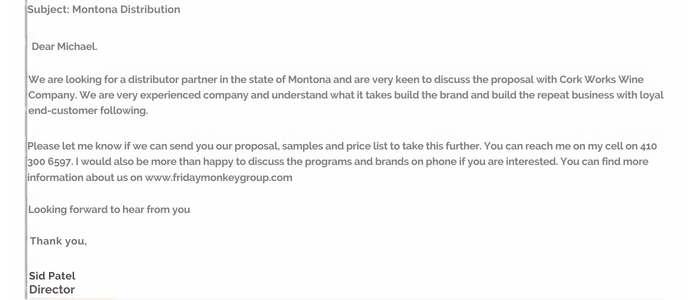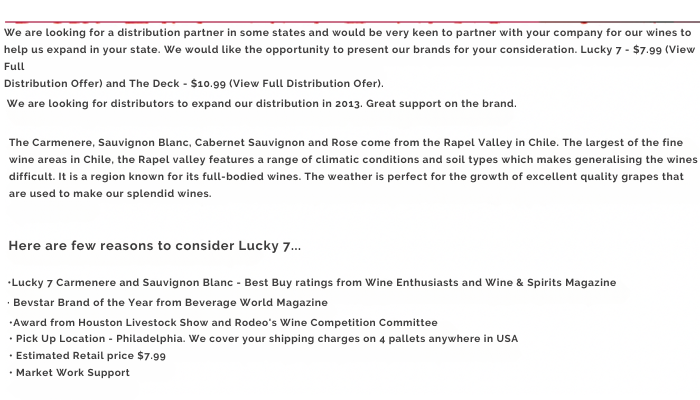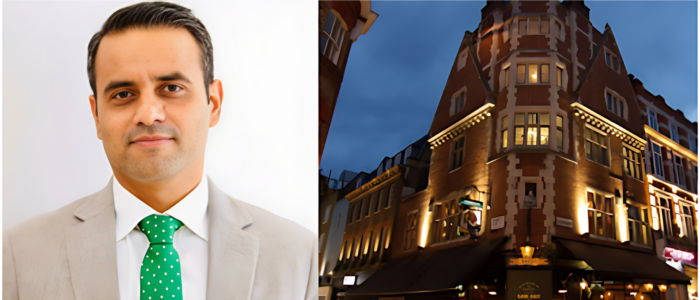Super Early Deadline
30 November 2025
Judging
Date
24 & 25 March 2026
Winners Announcement
22 April 2026
30 November 2025
24 & 25 March 2026
22 April 2026

Here is one real Q and A session between our CEO, Sid Patel, and the brand owner.
Here is the Case:
I just started an unfiltered vodka brand in Brooklyn about 5 months ago. I've gotten into 25 accounts, doing lots of in-store tastings, and lots of door-to-door. I wasn't in this industry before, so I am learning a lot and making lots of mistakes. I would love a chance to speak with you to get some thoughts and guidance on how to best approach what I'm trying to do with my budget and resources.
Questions:
Sid: 100% trade. Getting in front of some retailers, sommeliers and bartenders is where you need to spend money. Once your product is with them, how you will help them deplete is where you need to spend money. Stay on this for 3 years or till your brand is national and selling 50,000 cases. Once you have 2000+ retail accounts and little national footprint, you can start consumer ads to maintain and grow depletion via consumer pull.
Sid: All. Bars and Restaurants may feel expensive and NOT ROI positive as the cost of sale to get that 1 case order may seem high. So I suggest 70% off trade and 30% on trade and after 3 years do 50-50. Brands are surely built via on-trade. They offer permanency as the more you are printed on the menu the more stable your business will become.
Sid: DM me for more samples. I have an entire talk with examples. I pasted 2 simple samples that worked for me.


Sid: Well, it depends on your costs and many factors. I would say follow this simple approach. Let your importer make a 30% margin, your distributor make a 35% margin, your retailer make a 40% margin, and keep 10% for trade marketing budgets. Make sure you are 5-10% cheaper than 3 of your competitive brands. You have to offer more margins than your competition (that already has a high sell-thru).
By competition I mean, category leader brands. In your case if it’s Vodka you are selling at $40, I would compare it with the cost to retail for Grey Goose and what is the depletion rate for Grey Goose in that account. You have to beat that for your retail customer to give you a chance. DM me for more details if you want. You must be self-aware and understand the truth of pricing and that your customer needs to get a return on investment in your product. The other approach I would recommend if you are in the premium or ultra-premium category is rather make an 80-100% margin and have all make more margins and focus on the story of quality. You have to choose.

Sid Patel, CEO of Beverage Trade Network and London Spirits Competition
Sid: 1 on 3 cases, 3 on 10 cases. $100 amex if you sell xyzzy number in xyzzy days. In-store tastings. Menu placement incentive. House pour flat incentive. Churn incentive, if you converted someone else’s consumer to my brand. Thank you money. Slot placement. Floor placement. Window sign and the list can go on. See what the buyer wants and what works for them.
Sid: Pre-sell. Get 10 orders / 10 accounts and go to the distributor. And this has to be ongoing. A simple rule of thumb if you want a new distributor is, to pre-sell a pallet order for them and ask them to buy 2 pallets from you. One you have already pre-sold and one you come to the market and sell. Once you fly back, you can expect a new PO from your distributor. Ask them to also sell the same as you do. Do this for 2 years.
Sid: The standard metric for sales representatives is 60 accounts a week. 8-12 a day. Friday and Sat for merchandising, collecting checks, office meetings, hello rounds, and in-store tastings. As for new accounts, if they open 5 a week, that’s very good. The metric to follow is revenue per account and the number of accounts needs to grow monthly.
Sid: “Your bottle price is too high. I don’t think we can make money on your brand.”
“We don’t sell much of your category, so we’ll have to pass.”
“That rack is reserved for XYZ distributor and I am locked into their program for the next 12 months.”
DM if you want more Q and A on this. Can send you a whitepaper for this.
Sid: I would advise listening to people who have done it. I talk about this as I have done it. I have cold-called 2000 stores and more. Talk to people who have done it, who have been in the game for more than 10 years. Some consultants have never made their brand or invested their own money so they don’t know the pressure you have. Thus, talk to a brand owner who is hustling out there on the road and building a brand. Talk to your buyer (retailers).
A full video episode of brand deep dive sessions will be sent to the current entrants of the London Spirits Competition and will be available in the entrant zone soon.
[[relatedPurchasesItems-63]]
If you are a spirits brand looking to grow distribution or build credibility that can help you with more closing, the London Spirits Competition is a perfect platform to enter your products into.
All judging is carried out by drinks professionals who have a direct buying experience for wines, beers, or spirits and includes sommeliers, bartenders, importers, distributors, wine merchants, and specialist drinks buyers.
Brands are invited to register before the early submission deadline of December 20, 2023, to save.
Show your spirits where it matters. Get your products tasted by top bartenders, buyers and experts at the London Competitions — enter now.